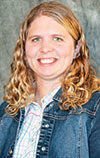University of Nebraska – Lincoln beef specialist Rick Rasby suggests producers begin by working with their veterinarian to develop a herd health plan. At UNL, they have been running cows and calves in a drylot setting for the past three years.
“We work closely with our extension veterinarian and designed a herd health program and, knock on wood, we have not had any calf health problems or at least minimal,” said Rasby on the topic when he presented at the Northern States Beef Conference on Jan. 5. “From a scours standpoint, we do a rendition of the Sandhills Calving System in a drylot.”
When drylotting, Rasby also suggests adjusting calving time to late July, August and September. By moving the calving date from March and April to late summer, producers should be able to avoid the muddiest time of the year and hopefully cut down on the amount of scours.
“February, March, April calving may not work in a drylot because of the mud that you have to contend with, and the other thing is that if you calve in the spring in a drylot, then you have to feed a lactation diet for a long time,” Rasby said.
In the drylot setting, he suggests a limit-fed diet. The diet meets all of their nutritional requirements, but the cows are fed once a day and they are not eating all they can eat in a day. The diet they use at UNL also takes feeding the calf into account.
At a very young age, Rasby said, calves will start coming to the bunk and eating. He said they were also looking at the efficiency of weaning versus keeping the pairs together so they are eating the same ration as the cows.
“You need to be able to weigh the feed accurately, especially if you’re going to feed limit-fed diets. You want to feed a limit-fed diet about the same time every day,” he said.
Since the calves are in the drylot with the cows, producers should ensure that the waterers are low enough for the calves to drink out of them. The bunk also needs to be low enough for the calf to reach in. Rasby suggests 3.5 to 4 feet of bunk space per pair.
Rasby cautions producers to separate the young cows from the old ones in a limit-fed situation.
“If you have a cow herd that has both young and old cows, younger cows don’t compete well in a limit-fed situation. Be able to have a pen for those twos and 3-year-olds,” he said.
Rasby also suggests having an area in the drylot where just calves can go during calving time. At UNL, they run a hot wire along the back of the pen.
In their research, Rasby looked at early weaning calves as well as keeping the calves with the cows. They weaned a set of calves at 90 days of age and kept another group with the cows.
“Basically what the data says is that if you don’t have a place for the calf to go by itself, it will do just fine with the cow. We didn’t have any difference in performance between early weaned and calves that stayed with their dams,” he said. “Reproductive performance wasn’t different between the two groups.”
Some producers may not want to drylot the cow herd 365 days of the year. If they have access to crop residue for grazing, that would be another possibility to get cows to graze when no pasture is available.
“The idea is to get them out soon after harvest and as long as the stalks stay open. We use our cornstalk grazing calculator to calculate the number of days based on corn yield that those cows should stay on that particular stalk field, and when that’s used up, we go to the next one,” Rasby said.
Producers can learn more about fall-calving cows and drylotting at the University of Nebraska – Lincoln Beef Extension webpage. ![]()
PHOTO
Photo by Philip Warren.







